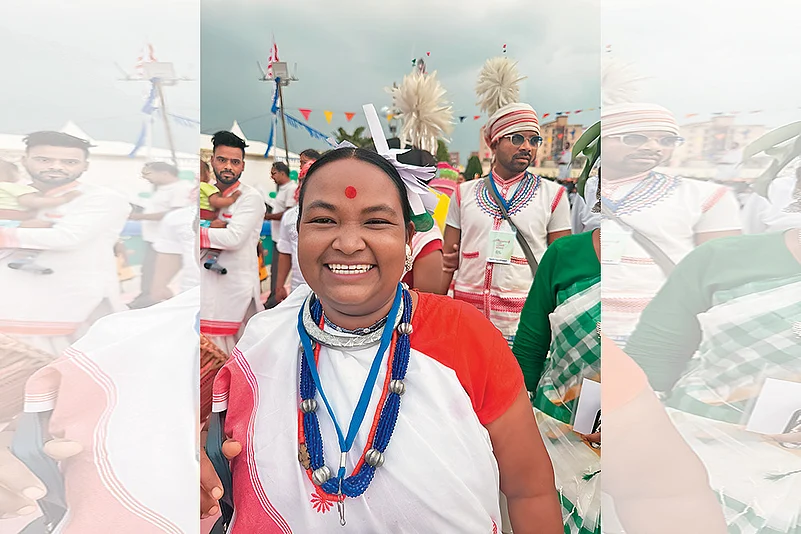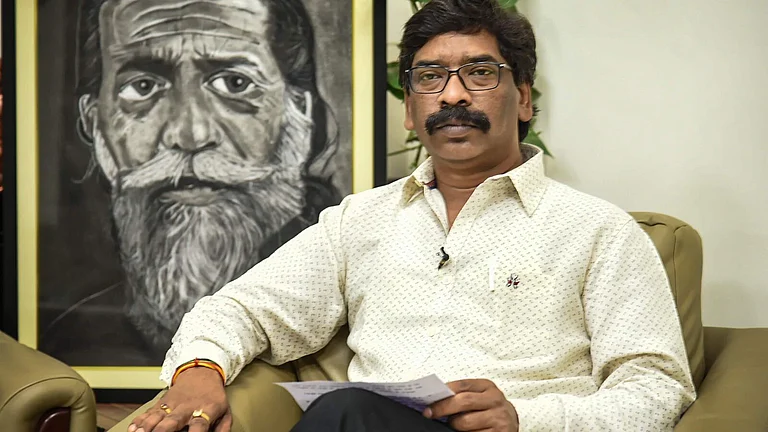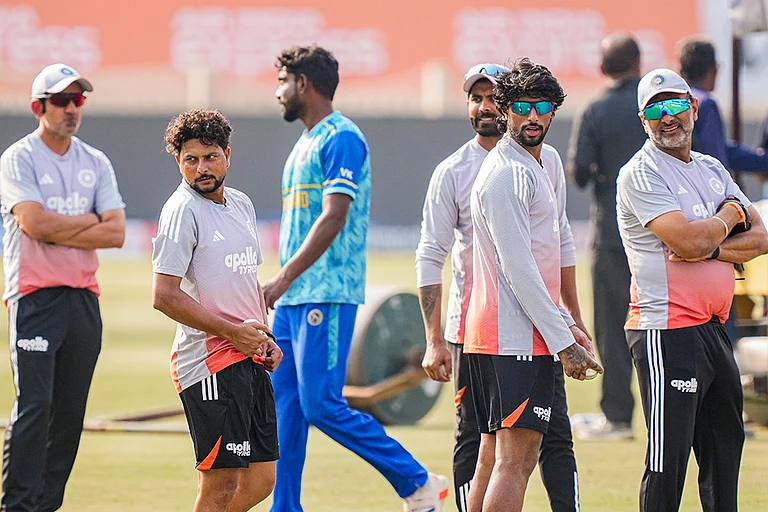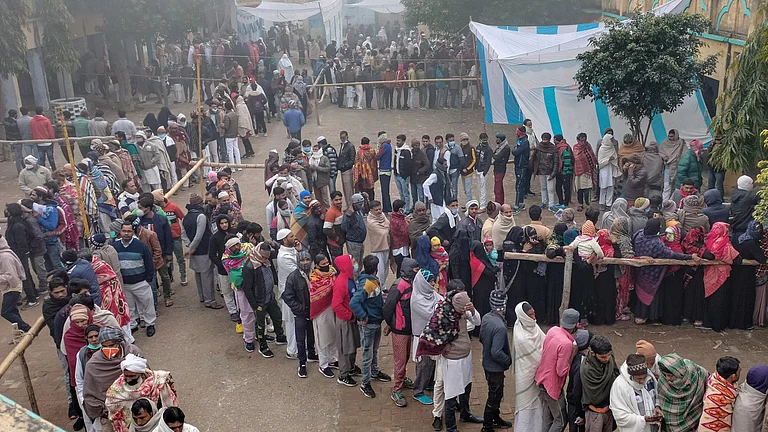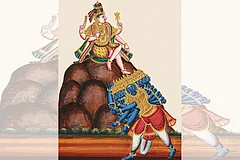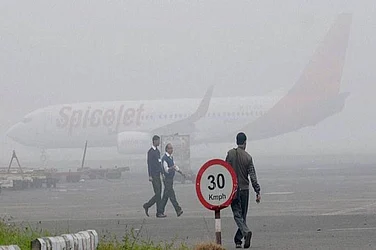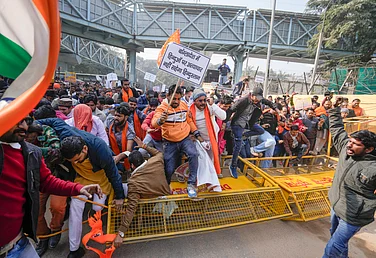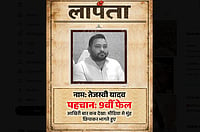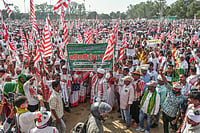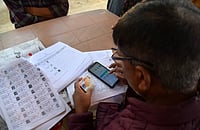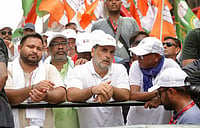This story was published as part of Outlook's 21 October 2024 magazine issue titled 'Raavan Leela'. To read more stories from the issue, click here
Come Vijayadashami, an air of sadness hangs over the Asur settlements located on the Netarhat hills in Jharkhand. It’s the symbolic killing of their “ancestor” Raavan and their “king” Mahishasur on Dussehra every year that bothers them.
Though Hindu mythology presents Mahishasur and Raavan as demons, for the Adivasis, especially the Asurs—classified as a primitive tribe—they are revered personages. The Asurs believe that Mahishasur—portrayed as an evil demon who was slayed by Goddess Durga—belongs to their community. They are convinced that he had knowledge of all three worlds and that he protected his people from the beasts.
“Stop branding our ancestors as villains,” says Vimal Asur, who belongs to the marginalised Asur tribe and has been raising this demand from time to time. “Both Raavan and Mahishasur were extremely knowledgeable,” he adds.
In his village, Raavan dahan does not take place. As the Asurs do with Mahishasur, many other Adivasi communities claim Raavan as their ancestor and oppose his burning on Vijayadashami.
Among these dissenters, Dishom Guru Shibu Soren is particularly significant, because he opposed the burning of Raavan effigies while occupying the Office of the Chief Minister. Soren calls Raavan his kulaguru (spiritual teacher of the family or clan). He repudiated the tradition that had the Chief Minister of Jharkhand setting light to the effigy of Raavan on Vijayadashami.
The year was 2008 and the Jharkhand Mukti Morcha supremo was the state chief minister. A programme to burn the effigy of Raavan was organised at Ranchi’s Morabadi ground, and as was the custom, the organisers met Soren and requested him to join the programme and touch off the Raavan effigy. Soren refused, saying that Mahagyani Raavan was his kulaguru, so he could not burn him. Regardless of the assessments proffered by political pundits, Soren’s decision augmented his image among a large section of Adivasis.
In contrast, his son and current Jharkhand chief minister Hemant Soren has burnt the Raavan effigies for many years as a Chief Minister, marking a departure from his father’s ideology.
Author and activist Gladson Dungdung remarks that Hemant Soren is not ideologically staunch on the issue of Raavan. “He may have been saying that the Adivasis are not Hindus and will never be, but he has a predilection for Hindu rituals. If you look at Guruji [Shibu Soren], ideologically, he seems firmly committed to tribalism. I have never seen him visit and pay obeisance at any temple, mosque, gurudwara or church.”
The Gonds, who constitute the second-largest number among the Adivasis, refer to Raavan as Gondwana Samrat, Maharaja and Gond Mahapurush.
Dungdung also says that Soren burning the effigy of Raavan is politically motivated and is due to the influence of the non-Adivasis who surround him. The Soren family belongs to the Santhal community, whose population is highest in Jharkhand. Notably, neither the Santhals nor the Asurs in Jharkhand are unequivocal in regarding Raavan as their ancestor.
The Gonds, who constitute the second-largest number among the Adivasis, sometimes refer to Raavan as Gondwana Samrat, Maharaja, and Gond Mahapurush. According to them, Raavan was not a Brahmin but a Gond king, who has been unfairly maligned by the Brahminical Hindu religion. He was the tenth religious leader of the Gond tribe, who carried forward the legacy of their heroic ancestor and supreme deity Kupar Lingo. According to their version of the tale, Raavan was killed by Aryan invaders.
The killing of Mahishasur and Raavan is considered the most important part of the festival called Dussehra that is celebrated all over the country. However, in many areas of Jharkhand, Chhattisgarh, Madhya Pradesh, Maharashtra, Odisha, Bengal, and southern India, tribals celebrate this day as the day of martyrdom of Mahishasur and Raavan.
In 2018, tribals from several districts of the Bastar division of Chhattisgarh wrote a letter to the governor, the state government, and the district collector, asking for a ban on the immolation of Raavan and Mahishasur effigies. The Akhil Bharatiya Gondwana Gond Mahasabha demanded that the administration ban such programmes, since they constitute discrimination on the basis of race, caste, gender or birth, a practice proscribed under Article 15 of the Constitution.
Going a step further, a group of Gond students submitted a memorandum two years ago to the collector of Mandla in Madhya Pradesh, in which they declared that if Raavan dahan is not banned, they will burn Ram.
Experts note the heightened awareness among the present-day tribals about their rights, descendants and ancestors. As a result of this, they have begun protesting loudly against the immolation of Raavan and Mahishasur.
According to storyteller Sushma Asur, Mahishasur’s real name was Hudur Durga and it was his principle never to raise arms against women. Taking advantage of this, his enemies had him killed by putting Durga, a woman, in the lead.
MORE FROM THIS ISSUE
What the school textbooks present as gods killing demons was actually the en masse slaughter of the tribal forebears, says Asur. A society that celebrates the memory of the massacre of tribal ancestors should raise no objection if the tribals observe the same day as a day of martyrdom, she adds.
(Translated by Kaushika Draavid)
(This appeared in the print as 'Not a Demon, but Our Own')







